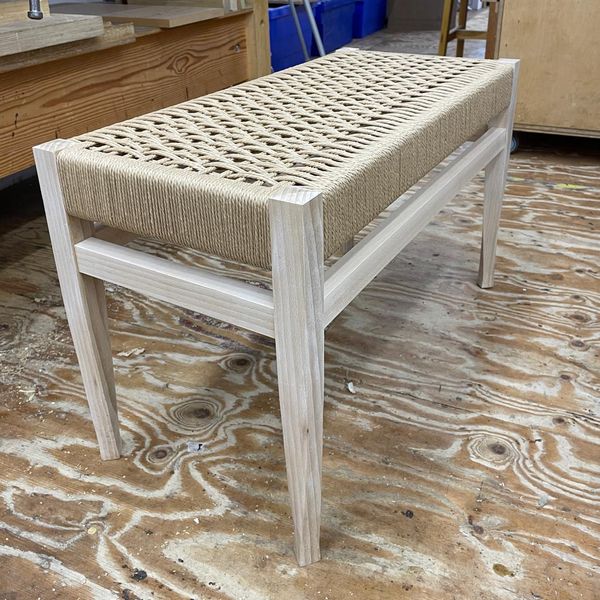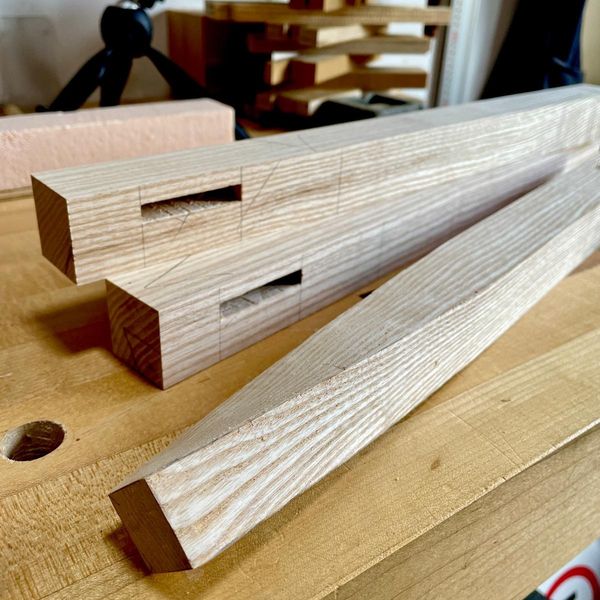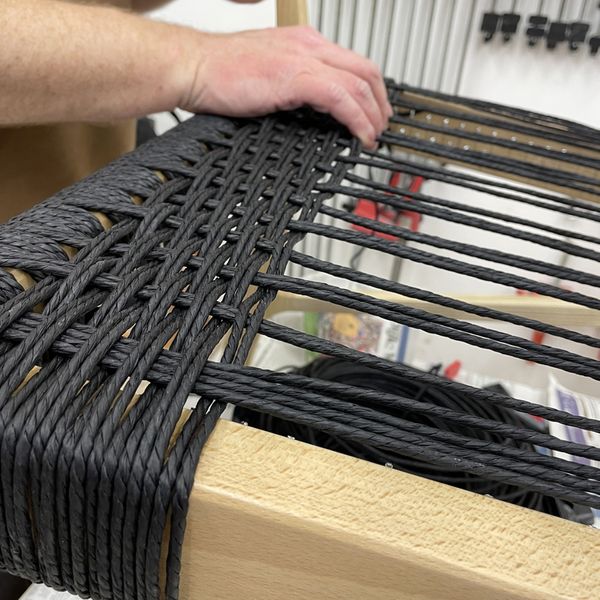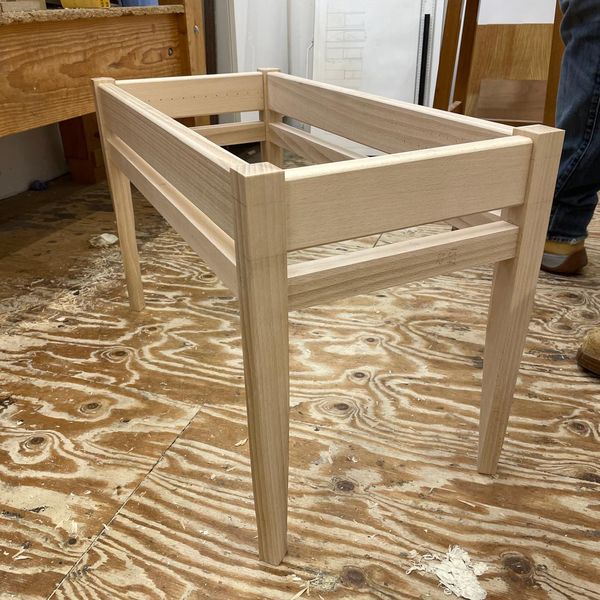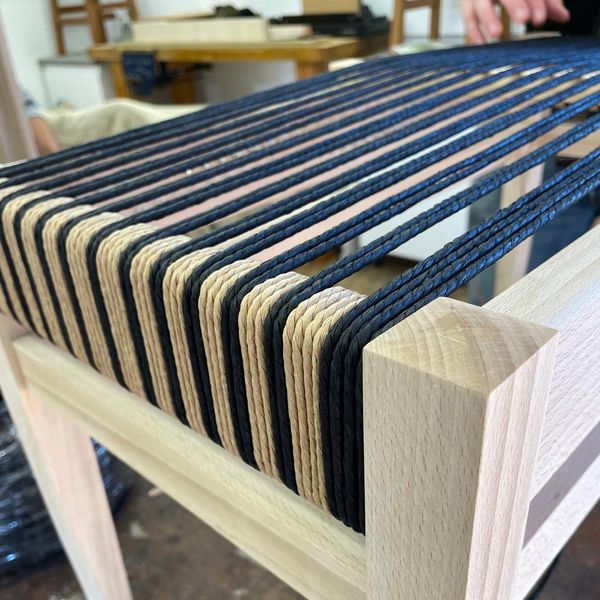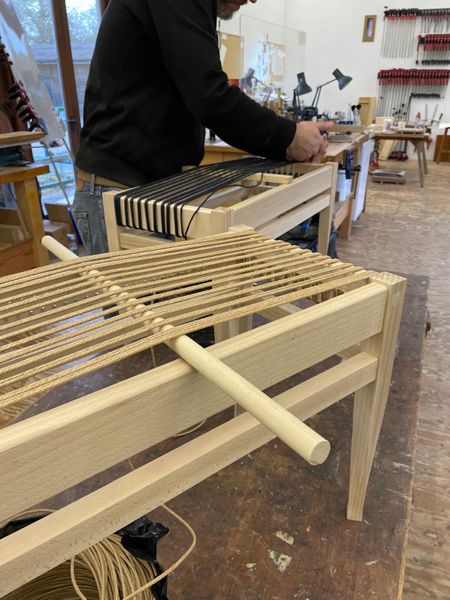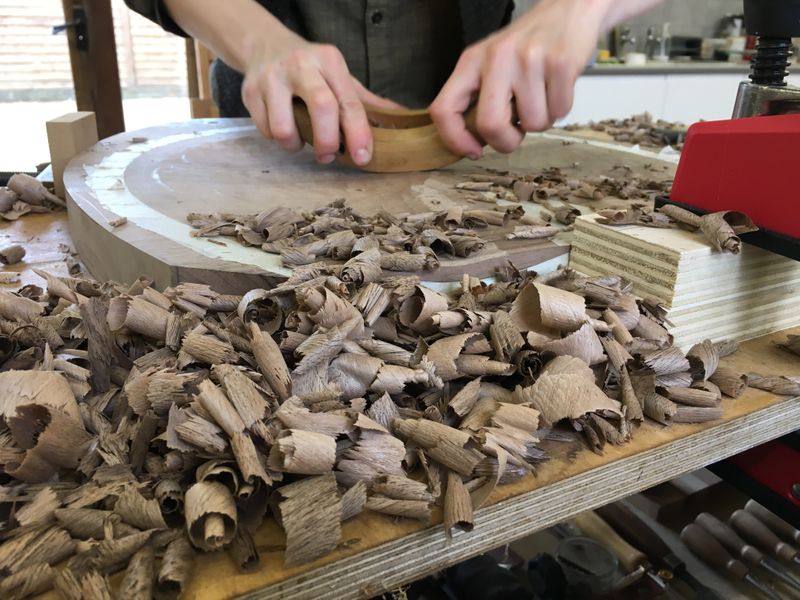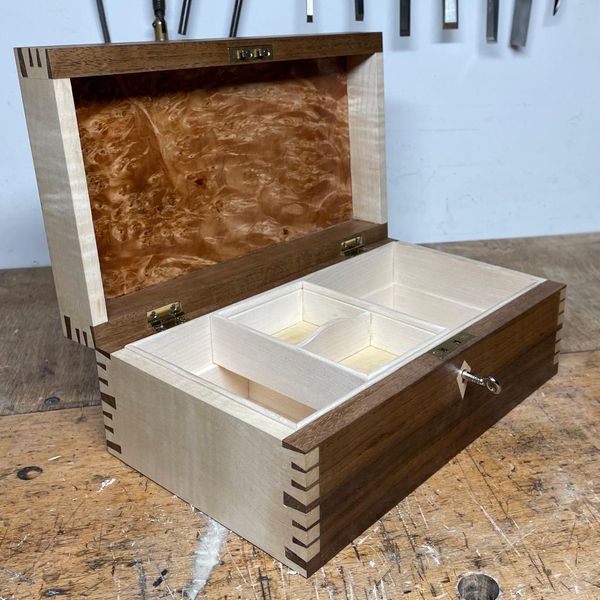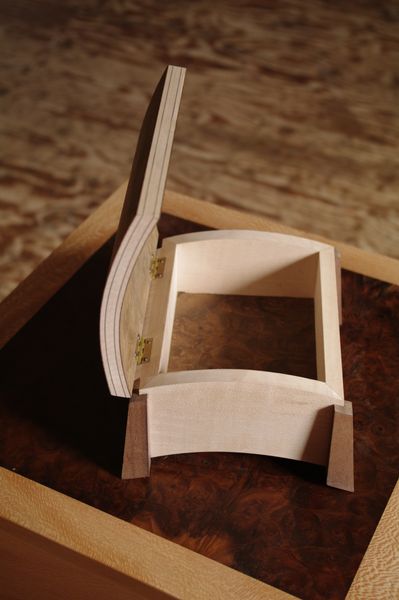Description
This is another great follow-on course from ‘skills week’ or ‘skills weekend’ but will also happily stand alone if you have at least a little woodworking experience. All furniture making starts with an idea, and perhaps a ‘fag-packet’ sketch, which can then be developed into a proper well thought out design. So, with all this in mind, we’ll start by looking at the thought-process and considerations that were made during the design of the stool to give it a crisp, contemporary styling, and look at how the modern and traditional joints were selected. One of the main design features of this stool is the twist to the legs. This design element needs careful laying out and a strategy for keeping track of the shape as it develops, to maintain a consistent looking twist. There’s lots of hand work in this part of the stool, which will really help you to develop your hand-skills. The main structural joint for this stool is the mortice and tenon. Perhaps thought of as a very basic woodworking joint but which is, in practice, a very tricky joint to get right. We’ll look at the design considerations and rules for setting out this incredibly strong, versatile joint and give you some fool-proof techniques for cutting them with confidence, predominantly by hand. Having said that, we’ll also look at the benefits of what has become one of the most-used power tools in any professional workshop, the ‘domino jointer’. Dominos will be used to joint the stretchers. The DrawBored and pegged mortice and tenon is a very traditional joint, used extensively on early oak furniture, and still provides an excellent way of assembling a frame without the need for clamps. It also adds a nice, discreet design feature. Layout is important for the Drawbore to be successful and we will also look at making the pegs in a contrasting wood. The seat rails will have to be shaped to allow the Danish Cord to work nicely. Danish Cord, which is actually just strands of twisted paper, can create a lovely contemporary look to any seat. We’ll look at the important considerations when laying out the weave, set out the pattern, including fitting the special nails, and weaving the seat. What you will Learn: Mortice & Tenons, Legs with a twist, Danish Cording • DESIGN – design considerations including: Structural Strength; Aesthetics; Joint selection. • MARKING OUT – Using Gauges, including the Mortice Gauge and the clever Continental method of keeping track of which component goes where. • MORTICE & TENON JOINTS – Structural considerations and design rules; Cutting accurate Mortices and Tenons by hand and with a little help from the Morticer. • THE MODERN MORTICE & TENON – setting up and using the very clever DOMINO JOINTER. • LEG TWISTS – Laying out, and strategies for controlling the cutting of the Leg Twists to maintain a consistent shape, using only hand tools. • USING a FINESSE TOOL – How to make friends with a spokeshave – used as part of the shaping process for the legs. • SHARPENING and USING a CABINETSCRAPER – Such a simple and versatile tool – but it’s only of any use if you know how to sharpen it. • DRAWBORED PEGGED JOINTS – Such a clever traditional method of pulling joints together without the need for clamps. Laying out the joint to ensure success and Making the Pegs. • POLISHING THE FRAME – Preparing the wood and a couple of ideas, traditional and modern, for a quick, good looking finish. • DANISH CORD – Not surprisingly used extensively on some of those iconic Danish Chair Designs. Design considerations when using Danish Cord and how to lay out and weave this wonderfully good looking seat.
What's included in the price?
All tools, materials, and safety equipment if necessary. Refreshment breaks with tea, coffee, cakes, and biscuits. Students should bring their own packed lunch.
Duration
4 days
Cancellation policy
Non-refundable - Refunds are not available
Maker

Over the 35 years I have been running a successful bespoke furniture making and antique restoration business, I have become passionate about passing on the skills and knowledge through my Woodworking School. We have designed a range of educational long and short courses that have traditional hand skills at their core, the key requirement being simply enthusiasm and a thirst for knowledge.
Venue






